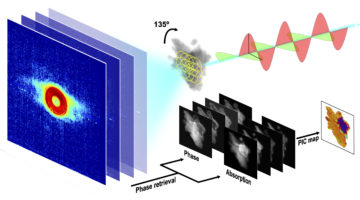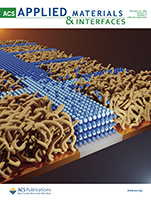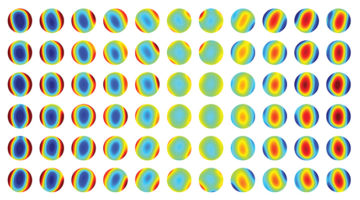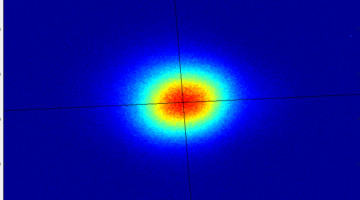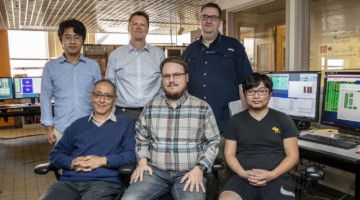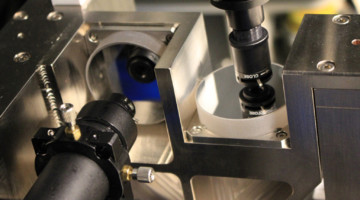Researchers at large scientific facilities such as the ALS have applied a robust machine-learning technique to automatically optimize data gathering for a variety of experimental techniques. The work promises to enable experiments with large, complex datasets to be run more quickly, efficiently, and with minimal human intervention. Read more »![]()
![]()
Coral Skeleton Reveals Hidden Structures under Multimodal Scrutiny
A powerful new microscope combining ptychography with x-ray linear dichroism provides nanoscale insight into the biomineral strength and resilience of a coral skeleton. The technique’s previously unachievable spatial resolution and contrast will open up new lines of research for users of x-ray microscopy at the ALS. Read more »
Additive Lithography–Organic Monolayer Patterning Coupled with an Area-Selective Deposition
This scene depicts the layer-by-layer growth of an inorganic film in a selected area. The alternation of a chemical agent (blue) deposits on a gray substrate to form an inorganic film. A cross-linked organic material (tan) locally inhibits this reaction and prevents film deposition. Furthermore, the pattern-wise cross-linking of this organic film enables nanoscale pattern generation. Read more »
To Speed Discovery, Infrared Microscopy Goes “Off the Grid”
Researchers developed a highly efficient way to collect infrared microscopy data that avoids the use of slow, grid-based raster scans. The method substantially reduces image-acquisition times by autonomously increasing sampling density in regions of interest, facilitating infrared spectromicroscopy of biochemical processes in real time. Read more »
Super-Resolution Measurement of X-Ray Mirrors
ALS researchers, in collaboration with software and nanofabrication small businesses, developed a way to improve the accuracy of instruments that measure the surfaces of x-ray mirrors. The work significantly improves the quality of the data needed for the fabrication and optimal performance of advanced x-ray beamlines and space telescopes. Read more »![]()
![]()
Characterization of EUV Optics using Intrinsic Mask Roughness
Researchers developed an in situ computational technique for measuring aberrations in EUV optics, taking advantage of the surface roughness of photomasks used to transfer circuit patterns onto chips. The technique will prove increasingly valuable in the characterization of coherent light sources and beamline optical systems. Read more »
Machine Learning Helps Stabilize Synchrotron Light
Researchers showed that machine learning can predict noisy fluctuations in the size of beams generated by synchrotron light sources and correct them before they occur. The work solves a decades-old problem and will allow researchers to fully exploit the smaller beams made possible by recent advances in light source technology. Read more »![]()
![]()
Machine Learning Enhances Light-Beam Performance at the Advanced Light Source
Researchers have successfully demonstrated how machine-learning tools can improve beam-size stability via adjustments that largely cancel out these fluctuations—reducing them from a level of a few percent down to 0.4 percent, with submicron precision. The demonstration shows that the technique could be viable for scientific light sources around the globe. Read more »
Infrared Nanospectroscopy at Graphene–Liquid Interfaces
Researchers developed a new infrared approach to probing the first few molecular layers of a liquid in contact with a graphene electrode under operating conditions. The work offers a new way to study the interfaces that are key to understanding batteries, corrosion, and other bio- and electrochemical phenomena. Read more »![]()
![]()
Mirror, Mirror, in the Optimal Spot
Researchers have developed a fast, systematic way to get the best performance out of x-ray mirrors by optimizing their positioning in beamlines. The system does in a day what used to take many days, by combining precise surface metrology with computer analysis of the optimal alignment of a mirror in a beamline. Read more »

